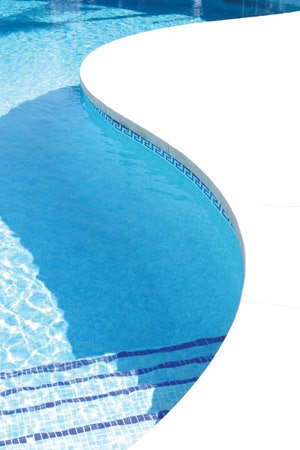
Few stop to consider the point, but the technologies we view as a daily matter of doing business in the pool and spa industry are really just smaller versions of some of the most massive, complex and important hydraulic systems ever created. Within this broader framework, there's an opportunity to better understand the past, present and future of water treatment as it applies to pools and spas, and beyond.
To take that journey, let's step back just a bit and look at filtration within the confines of pool and spa industry with an awareness of the world beyond the coping.
The history of filtration could fill volumes of textbooks with countless twists, turns, failures and stunning successes, many of which have changed the nature of civilization itself. In some cases, the earliest examples of water filtration use media that is similar to materials used to this day.
Some crude forms of filtration were known to Antiquity, but the story of modern filtration begins in the 1670s when Sir Francis Bacon began experimenting with sand filtration. Not long after, the science of filtration received a huge boost in the late 17th Century when Anton von Leeuwenhoek built the first microscope and quickly discovered the presence of microorganisms in water.
This set a number of key developments in motion, including the discovery that contaminated wells in London were causing the spread of cholera in the early 19th Century. This led to the use of sand filtration to clean public water and the first-ever government regulation of public water. Shortly thereafter, the first citywide sand filtration system was established in Paisley, Scotland in 1804. In 1827 massive low- rate filtration systems were installed throughout Great Britain under the auspices of Metropolis Water Act of 1852.
As a result of these crucial developments, some historians associate the development of modern cities and medicine with the availability of potable water. Meaning it's no reach to view water filtration as a key technical foundation for modern life.
STEADY STEPS
Swimming pools in many ways can be accurately seen through the same kind of lens. Without filtration, they could not and would not exist because they would quickly become deadly health hazards. Even early pools that relied on drain-and-replace regimens to maintain clean water still ultimately relied on public water filtration.
It's well known that sand was the first medium used to filter swimming pool water in the early 20th Century, a development that led directly to the concept of recirculation and on-site treatment. Diatomaceous earth filtration came on the scene following World War II, where small DE systems were used to treat water for soldiers on the battlefield, a key development that enabled troops to move independently of water supply lines and saved lives.
Cartridge filtration first appeared in the 1950s in oil refineries, developed for applications where large filtering surface areas were necessary for mass production. They were first used in pools and spas in the 1960s and have arguably seen the most development in recent years.
In general, it's fair to say that these technologies have served the industry so well, for so long, that it's reasonable to expect mostly slow and incremental changes in technology. High-rate sand filters replaced rapid sand filters, for example, increasing efficiency and fast turnover. Improvements to internals in DE filters and cartridge filters have increased hydraulic efficiency in service life. And, certainly automation has made systems requiring backwashing self-sustaining, or close to it. Advances in tank construction and materials have also increased safety and service life.
Most important, there's been a steady pace of improvement in media that has led to ever increasing water quality. All told, filtration technology is one of the great success stories of the pool and spa industry, and in a larger context, public health.
So, what's next?
NATURAL ALTERNATIVES
The most recent developments are aimed at a few important areas — energy efficiency and the ability to filter smaller particulate and remove certain chemical constituents in water. Many of these technologies and materials have been around for years, while some are newer.
One of the newer filtration schemes in the pool industry also happens to be one of the oldest on the planet. It's known by a number of names: bio-filtration, natural swimming pools, the constructed wetlands effect and others, but it all boils down to basically the same thing, the use of natural processes to filter and even chemically treat water.
In nature, water passing through matrices of sand, gravel and plant material is purified by both physical removal of particulate and a process of chemical uptake, known as the nitrogen cycle. Essentially, this process involves plants combined with colonies of beneficial microorganisms absorbing nitrogen- and phosphorous-based chemicals. In the context of the pool industry, the German firm BioNova has led the way in recent years marketing various versions of systems designed to harness this process in favor of traditional chemical treatment and filtering systems.
Although new to pools and spas, similar processes have been used for decades in aquarium and pond and stream systems, where under-drain manifolds are set up in layers of gravel and sand to create huge water columns that slowly filter and treat water. Pond and stream specialists often deploy varying combinations of upwelling or downwelling bog areas, planting pockets and even floating islands to create large areas where these natural methods of filtration and purification take place.
On a larger scale, expansive systems where water passes through manmade wetlands are now being used in the treatment of municipal water and rainwater runoff as a way to both conserve water and reduce contamination to public water supplies.
On a completely different level, ancient natural processes are being harnessed in a variety of alternative media products, essentially aimed at providing improved performance from sand and DE. Among these, compounds known as zeolite and clinoptilolite, both minerals associated with volcanic activity, have gained traction for a couple of big reasons.
First, because of their physical structures, there was increased surface area for filtration compared to sand and DE. Used in combination with a traditional filter medium, a filter of a given size in effect becomes larger because of the greater filtering capacity. Second, because of these compounds' molecular structure, they produce a form of ion exchange, which can remove metals and some organic compounds.
Similar in some respects is activated carbon filtration, which uses carbon granules most often created from a baking process using coconut shells. Activated carbon is often used to remove negative ions from ozone, chlorine, fluorides and other dissolved organic compounds. Other natural materials including cellulose fiber and perlite also are widely used as filtration aids, increasing efficiency and reducing the size of particles removed from the water.
One concern about alternative media is that these products alter the hydraulic characteristics of filtration systems, which in some cases runs counter to flow requirements maintained by various governing bodies such ANSI or the National Sanitization Foundation. Such advances may necessitate revision of some of these standards.
IN THE MEMBRANE
As mentioned above, cartridge filtration was the latest to come on the pool and spa scene and only in recent years has it gained acceptance on par with sand an DE. It's also been an area of tremendous advancement.
Cartridge filters have always offered the advantage of increased surface area, due to their pleated designs, and they don't require backwashing, which conserves water. Cleaning them is relatively simple, compared to recharging a DE filter, which is famously dirty and even hazardous process.
In recent years, cartridge manufacturers such as Pleatco have made tremendous strides developing new materials used in cartridge media capable of removing particulate down to the 3 to 5 micron range, a level once considered available only through DE filters and more advanced forms of micro-filtration. Also, improved hydraulic designs that more evenly distribute flow over the entire filter area have further improved cartridge filtration.
Most recently, multiple cartridge filtration schemes have been introduced where water passes through two sets of cartridges, the first filtering larger particles with the second polishing the water by removing the extremely small material. This approach increases hydraulic efficiency, increases time between cleanings and ultimately produces sparkling clear water.
Finally, what many consider the ultimate form of filtration, reverse osmosis (RO), has now made its way into the pool and spa industry. RO filters were originally developed to desalinate seawater as a possible solution to dwindling fresh water supplies. Systems based on the principle are now widely used in laboratories, industry and wastewater treatment where there's a need to generate water that is virtually free of all dissolved minerals and particulate.
RO filters remove material down to a fraction of a micron and have the ability to strip water of minerals, including nitrates, phosphates and calcium as well as chemicals such as cyanuric acid. In terms of pool and spa applications, RO technology is not used as a permanent filtering technology, but as a service process, through which water that might otherwise seem to be beyond typical standard filtration and chemical treatment, can be returned to drinking-water quality.
This has led to a new breed of companies that have developed trailer-mounted RO systems that offer the ability to save water rather than sending it to waste, a process that has obvious benefits in areas such as Texas and California, where drought conditions have led to restrictions on draining and refilling pools.
RO also requires tremendous pressure to operate compared to other types of filtration and therefore consumes large amounts of electricity to drive large pumping systems, a drawback that has made desalinization impractical on a large scale.
When used infrequently on pools, it has gained popularity for its ability to create almost completely pure water, so much so that minerals such as calcium must be added back into the water so that it falls in the desirable range on the Langelier Saturation Index.
TO THE FUTURE
Even a cursory study of filtration technology reveals a fascinating variety of systems now in use in industry, public water treatment, medicine and even military applications. Terms such as ion exchange, carbon absorption, microporous membranes, ultra-filtration, nano-tube filtration, electrodionization, and centrifugation, among many others are now commonplace, each with its own unique sets of applications.
Which, if any of these, will find its way into the pool and spa industry is anyone's guess. We can be certain, however, that many great minds are considering just that question, and will soon be hard at work writing the newest chapter in the grand story of water filtration.
The adjoining discussion was culled from a number of resources and people who contributed invaluable insight including John Antretter of Pleatco, John Neely of Fiberweb, Steve Gutai of Zodiac Pool Systems, Bruce Wettstein of Pool Services Technologies, James Robyn from Bio Nova Natural Pools, The Quest for Pure Water: The History of the Twentieth Century by M.N. Baker and Michael J. Taras, Basic Water Treatment (3rd Edition) by Chris Binnnie, Martin Kimber and George Smethurst, Crowded with Genious by James Buchannon, Harper Collins, Water: A Natural History, by Alice Outwater, New York, Basic Books, and The History of Water Filtration, historyofwaterfilters.com, Aqua Technologies of Wyoming.
Comments or thoughts on this article? Please e-mail [email protected].












































